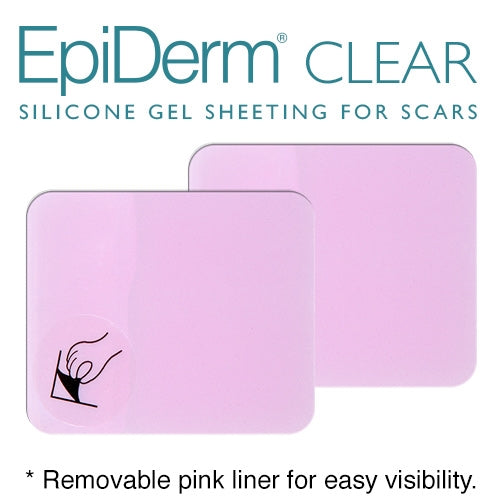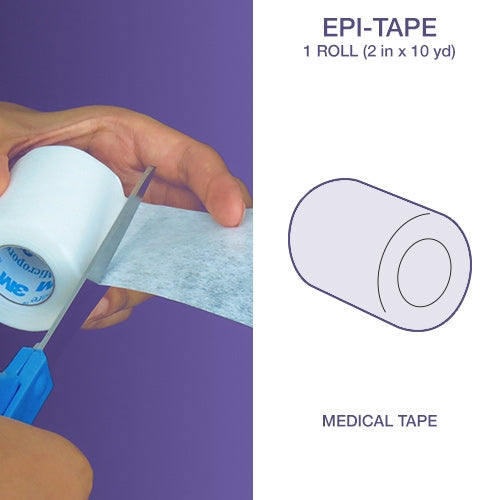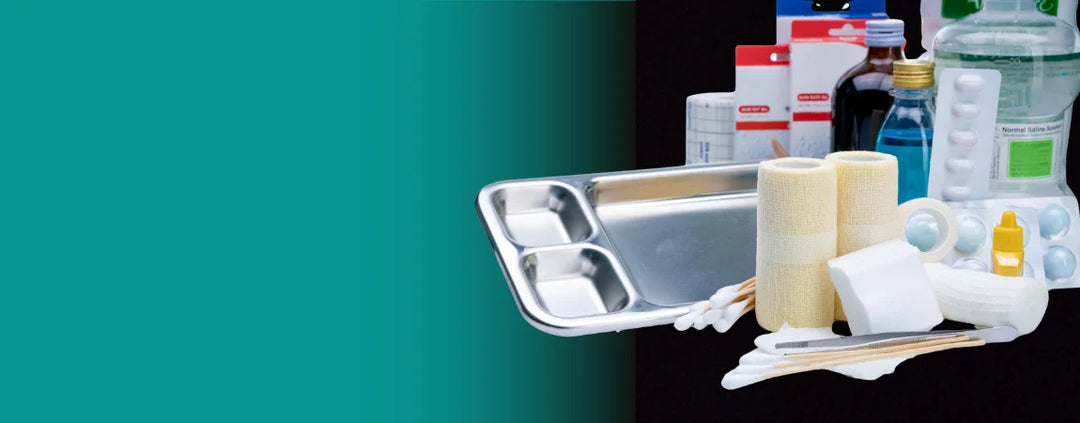Overview: This guide covers proven wound care supplies and scar treatments that work in hospitals and at home, from dealing with fresh wounds through reducing long-term scarring.
Getting wounds to heal properly means choosing the right supplies at the right time. When you look at diabetics over 40, they're twice as likely to develop peripheral arterial disease as people without diabetes. After an amputation, somewhere between 13 and 40 percent of patients die within a year. Those kinds of numbers drive home why picking good wound care products matters so much for patient survival.
We're going to look at what supplies you actually need when you're dealing with open wounds and trying to minimize scarring afterward. I'll base this on what the research shows and what works in practice.
Wound care breaks down into two main parts: taking care of wounds that are still open and trying to prevent scars from forming. Surgical sites get infected about 5 to 20 percent of the time, which means patients stay in the hospital an extra week to a week and a half. Worse yet, it makes them anywhere from 2 to 11 times more likely to experience serious problems. The good news is that using the right supplies and doing things correctly can stop about 60 percent of these infections from happening in the first place
Tools for Active Wound Treatment

Active wound treatment focuses on cleaning, protecting, and healing open wounds. Below are the essential tools for this stage.
Sterile Gauze Sponges
Sterile gauze sponges soak up blood, wipe wounds clean, and apply medicines. They work for small cuts, scrapes, or surgical wounds. Wound swabs are used to identify microbial colonization, but treatment decisions should be based on both culture results and clinical signs of infection, such as redness, warmth, swelling, or purulent drainage—per CDC and IDSA guidelines.. Non-stick sponges prevent tissue damage during dressing changes, reducing pain and speeding healing.
Medical Tape: Hypoallergenic medical tape minimizes skin irritation, making it ideal for patients who need to wear dressings for long periods. Proper tape application prevents bandages from shifting around, which stops bacteria from getting into the wound site and enables optimal healing.
Non-Woven Sponges: Unlike regular gauze, these sponges don’t shed fibers, so they won’t leave behind lint or debris in the wound. They soak up fluids really well, which makes them perfect for delicate areas around the eyes or joints. Healthcare workers also use them to apply medications precisely. By keeping wounds clean, they help prevent infections from developing.
Alcohol Prep Pads
Alcohol prep pads clean skin and equipment before procedures. Items like phones, stethoscopes, and blood pressure cuffs carry germs, with 53% of surgical workers bringing dirty devices into operating rooms. Use these pads only on unbroken skin, not open wounds, to avoid irritation.
Braided Cotton Rolls: Cotton rolls work well because they can shape themselves around oddly-shaped wounds and soak up a lot of fluid. Doctors often put them underneath the main bandage to give extra padding and help soak up drainage from deep cuts or wounds that are leaking a lot.
Wound Dressings: You need different kinds of bandages depending on what kind of wound you're dealing with. Some bandages are made to pull dead tissue and gunk out of infected wounds. Others are designed to seal up clean wounds so they stay moist - wounds actually heal better when they don't dry out completely. Your doctor might use regular Band-Aids, those gel-like patches, or just plain gauze, depending on how deep your wound goes and whether it's still oozing.
Suture Removal Kits: When it's time to get your stitches out, the doctor uses a little kit with clean scissors, tweezers, and antiseptic wipes. You need to keep everything sterile or you'll get an infection right where your wound is trying to heal.
Examination Gloves: Medical staff wear gloves when treating wounds to prevent spreading germs back and forth.
Some minor procedures don't show big differences in infection rates between clean versus sterile gloves, but doctors still use sterile gloves for open wounds and surgery to cut down infection risk. This is especially important for high-risk patients or those with weak immune systems (American Journal of Infection Control, 2020).
Conforming Gauze Rolls: This stretchy gauze wraps around wounds snugly without cutting off circulation. It's especially good for injuries on arms and legs where you need some gentle pressure to keep swelling down and help everything heal properly.
Cotton-Tipped Applicators: Q-tips let you dab medication exactly where it needs to go and clean around wounds without being too rough. The sterile ones come in individual packages so they won't hurt delicate tissue.
Sterile Drapes: These create a clean workspace when doctors are doing more complicated wound care or minor surgery.
Good hygiene and barriers stop up to 60% of surgical site infections, improving recovery.
Cotton Balls
Cotton balls wipe wounds and apply antiseptics. Cotton balls shouldn't be used on deep or open wounds because the fibers can get stuck in the wound, which slows down healing and can cause problems. Medical wound care guidelines recommend avoiding them for this reason.
Scar Care Solutions
Scar care begins after wounds close to lessen visible marks and improve skin function. The International Advisory Panel backs two proven methods: corticosteroid injections into scars and silicone gel sheeting.
Silicone Gel Sheets
Silicone gel sheets tackle scar itching, redness, and discoloration. Physicians have relied on them for three decades now, and they remain among the top non-surgical scar treatments available. Biodermis's Epi-Derm® sheets have demonstrated genuine improvements in scar appearance within clinical environments, particularly when patients begin treatment early during the healing phase. Research using the Vancouver Scar Scale documented measurable gains in pigmentation, vascularity, pliability, and height at both 4-week and 12-week intervals (P < .05), while scar length stayed roughly the same.
Silicone Gel with UV Protection
Silicone gel formulations containing UV protection, such as Pro-Sil SPF by Biodermis, improve scar height, color, and softness, especially in scars exposed to sunlight. In a clinical study of 375 patients, a silicone gel combined with herbal extract showed significant improvement in scar height (p = 0.005) and pliability (p < 0.001) compared to placebo. The broad-spectrum UV filter in Pro-Sil helps prevent scars from darkening or developing excess pigmentation during sun exposure, making it ideal for outdoor recovery.
Scar Massage Tools
Scar massage tools reshape collagen for a better scar appearance. A study of 12 patients showed silicone gel sheets improved revised surgical scars, with ten patients seeing nearly full improvement. Regular massage softens and flattens scars.
Flexible Silicone Tape
Flexible silicone tape like Epi-Tape™ by Biodermis gets used a lot in hospitals and clinics for scars on joints and areas that move around. There haven't been tons of big studies just on the tape itself, but the silicone technology behind it has been researched extensively and works well on different kinds of scars. What makes flexible tape different is that it actually stays put on areas that move a lot - like your elbows, knees, and shoulders - where regular silicone sheets tend to come off. This makes it a preferred option for active individuals or scars located on curved or articulated parts of the body.
Clinical Questions and Evidence
What are wound care supplies?
Wound care supplies include tools for checking, cleaning, treating, and protecting wounds. Infections slow healing, increase doctor visits, and raise costs, per a 2019 study in the Journal of Wound Care.
What are the minimum needs for wound treatment?
Minimum wound treatment needs sterile gloves, cleaning solutions, absorbent dressings, bandages, and tape. Sterile methods cut infection rates, as shown in a 2020 study in the American Journal of Infection Control.
What goes in a home wound care kit?
A home wound care kit holds gauze pads, rolls, cotton applicators, antiseptics, gloves, bandages, tape, and scar products for care after healing.
What supplies work for post-surgical wound care?
Post-surgical care uses non-stick dressings, sterile gloves, prescribed creams, cleaning solutions, and scar products. Infections hit 0.5 to 3% of surgical patients, per a 2017 study in the British Journal of Surgery.
What are the main wound care principles?
Wound care principles rest on four steps.
-
Cleaning removes dirt and germs.
-
Control stops and prevents infections.
-
Coverage is provided with sterile dressings.
-
Continuity tracks progress and manages scars.
How It Actually Works
When wounds fail to heal properly, a team of specialists usually gets involved to handle the more complex care. You'll typically see a surgeon, someone from infectious diseases, a lab specialist who can identify what bugs might be causing problems, a pharmacist to help pick the right antibiotics, and sometimes a geriatrician if we're dealing with an older patient. Each of these experts follows their own set of proven guidelines, but they adjust what they're doing based on what the wound looks like—whether it's deep, oozing a lot, brand new, or starting to close up. Since wounds change over time, the team has to keep checking and adjusting their approach.
The nurses and doctors who see these patients regularly keep a close eye on how things are progressing and change up their treatment plan as needed. Early on, when a wound is really wet and draining, they'll use dressings that soak up a lot of fluid—things like alginate or foam dressings work well for this. Once the wound starts drying out, they switch to dressings that seal things up or let just a little air through, because you want to keep some moisture there for healing. After the wound closes up, they often put silicone sheets on top to keep scars from getting thick and raised, which helps with how it looks later.
Teaching patients how to take care of their wounds is a huge part of the job. The medical team shows people the right way to clean and dress their wounds, and they make sure to warn them away from things like rubbing alcohol, which actually hurts the healthy tissue and slows everything down.
Everything these teams do is based on research that shows what actually works. Studies have found that picking the right type of dressing for each wound can speed up healing in chronic wounds by quite a bit. Using sterile supplies and techniques—like sterile drapes and gloves—has been proven to cut down infection rates significantly. Good wound care really comes down to using methods that have been tested, having the right supplies, and making sure someone with training is keeping an eye on things from the time someone gets hurt until they're completely healed.
References:
-
Peripheral Arterial Disease in Diabetics Over 40
Selvin, E., & Erlinger, T. P. (2004). Prevalence of and risk factors for peripheral arterial disease in the United States: Results from the National Health and Nutrition Examination Survey, 1999–2000. Circulation, 110(6), 738–743. https://doi.org/10.1161/01.CIR.0000137913.26087.F0 -
1-Year Mortality After Amputation
Filipe, L. F. B., Filgueiras, G. S., Souza, J. M. C., & Manganelli, B. F. (2022). Mortality and survival of lower limb amputees. Revista do Colégio Brasileiro de Cirurgiões, 49, e20223150. https://doi.org/10.1590/0100-6991e-20223150 -
PAD Prevalence in Diabetics
de Ferranti, S. D., de Boer, I. H., Fonseca, V., Fox, C. S., Golden, S. H., Lavie, C. J., ... & Eckel, R. H. (2014). Type 1 diabetes mellitus and cardiovascular disease: A scientific statement from the American Heart Association and American Diabetes Association. Diabetes Care, 37(10), 2843–2863. https://doi.org/10.2337/dc14-1720 -
SSI Reduction with Sterile Technique and Hygiene
Anderson, D. J., Podgorny, K., Berríos-Torres, S. I., Bratzler, D. W., Dellinger, E. P., Greene, L., ... & Yokoe, D. S. (2014). Strategies to prevent surgical site infections in acute care hospitals: 2014 update. Infection Control & Hospital Epidemiology, 35(6), 605–627. https://doi.org/10.1086/676022 - Sen, C. K. (2019). Human wounds and its burden: An updated compendium of estimates. Advances in Wound Care, 8(2), 39–48. https://doi.org/10.1089/wound.2019.0946
- Zimlichman, E., Henderson, D., Tamir, O., et al. (2013). Health care–associated infections: A meta-analysis of costs and financial impact on the US health care system. JAMA Internal Medicine, 173(22), 2039–2046. https://doi.org/10.1001/jamainternmed.2013.9763
- Anderson, D. J., et al. (2014). Strategies to prevent surgical site infections in acute care hospitals: 2014 update. Infection Control & Hospital Epidemiology, 35(6), 605–627. https://doi.org/10.1086/676022
- National Institute for Health and Care Excellence (NICE). (2020). Surgical site infections: Prevention and treatment (NICE Guideline NG125). https://www.nice.org.uk/guidance/ng125
- Public Health England. (2017). Surveillance of surgical site infections in NHS hospitals in England, 2012–2016. British Journal of Surgery, Surveillance Supplement.






